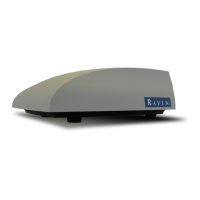Chapter1
l
Secure the harness to the frame or solid structural members at least every 12 in [30
cm].
l
Follow existing harness runs already routed on the implement as much as possible.
Proper harness routing should:
l
Secure harnessing and prevent the harness from hanging below the implement.
l
Provide sufficient clearance from moving components and operational zones
around shafts; universal joints and suspension components; pulleys, gears, belts,
and chains; moving linkages, cylinders, articulation joints, etc.
l
Protect harnessing from field debris and surrounding hazards (e.g. tree limbs,
fence posts, crop stubble, dirt clumps or rocks that may fall or be thrown by the
implement).
l
Protect harnessing from sharp bends, twisting, or flexing over short distances and
normal implement operation.
l
Connectors and splices should not be located at bending points or in harness sec-
tions that move.
l
Ensure sufficient length for free movement of the implement during normal oper-
ation and prevent pulling, pinching, catching, or rubbing, especially in artic-
ulation and pivot points. Clamp harnessing securely to force controlled
movement of the harness.
l
Avoid abrasive surfaces and sharp edges such as sheared or flame cut corners,
fastener threads or cap screw heads, hose clamp ends, etc.
l
Do not connect, affix, or allow harnessing to come into contact with components with
high vibration forces, hot surfaces, or components carrying hot fluids beyond the tem-
perature rating of harness components.
l
Harnessing should be protected or shielded if routing requires the hose to be
exposed to conditions beyond harnessing component specifications.
l
Avoid routing harnesses in areas where damage may occur due to build up of material
(e.g. dirt, mud, snow, ice, etc.).
l
Avoid routing harnesses in areas where the operator or service personnel might step or
use as a grab bar.
Note: Avoid applying direct spray or pressure washing of electrical components and
connections. High pressure streams and sprays can penetrate seals, cause corrosion, or
otherwise damage electrical components. When performing maintenance:
8

